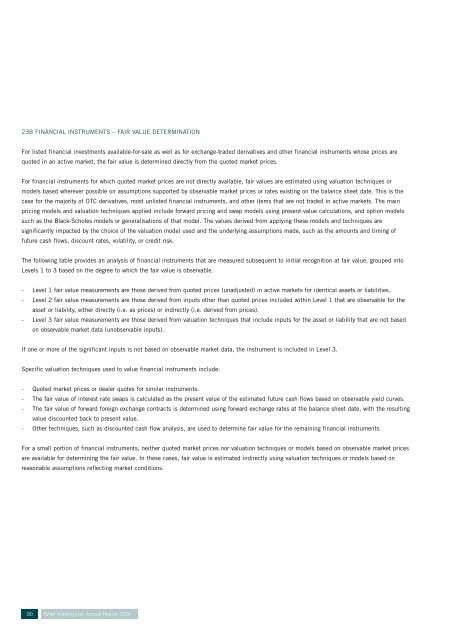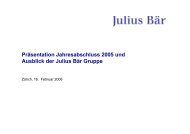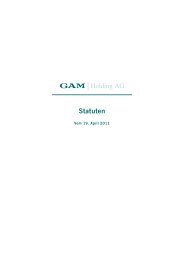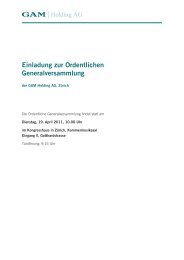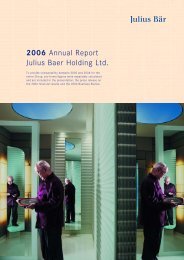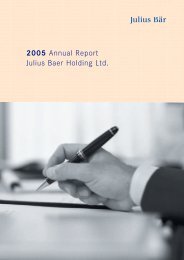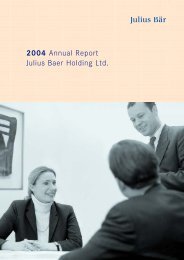ANNUAL REPORT 2009 - GAM Holding AG
ANNUAL REPORT 2009 - GAM Holding AG
ANNUAL REPORT 2009 - GAM Holding AG
You also want an ePaper? Increase the reach of your titles
YUMPU automatically turns print PDFs into web optimized ePapers that Google loves.
23B FINANCIAL INSTRUMENTS – FAIR VALUE DETERMINATION<br />
For listed financial investments available-for-sale as well as for exchange-traded derivatives and other financial instruments whose prices are<br />
quoted in an active market, the fair value is determined directly from the quoted market prices.<br />
For financial instruments for which quoted market prices are not directly available, fair values are estimated using valuation techniques or<br />
models based wherever possible on assumptions supported by observable market prices or rates existing on the balance sheet date. This is the<br />
case for the majority of OTC derivatives, most unlisted financial instruments, and other items that are not traded in active markets. The main<br />
pricing models and valuation techniques applied include forward pricing and swap models using present-value calculations, and option models<br />
such as the Black-Scholes models or generalisations of that model. The values derived from applying these models and techniques are<br />
significantly impacted by the choice of the valuation model used and the underlying assumptions made, such as the amounts and timing of<br />
future cash flows, discount rates, volatility, or credit risk.<br />
The following table provides an analysis of financial instruments that are measured subsequent to initial recognition at fair value, grouped into<br />
Levels 1 to 3 based on the degree to which the fair value is observable.<br />
- Level 1 fair value measurements are those derived from quoted prices (unadjusted) in active markets for identical assets or liabilities.<br />
- Level 2 fair value measurements are those derived from inputs other than quoted prices included within Level 1 that are observable for the<br />
asset or liability, either directly (i.e. as prices) or indirectly (i.e. derived from prices).<br />
- Level 3 fair value measurements are those derived from valuation techniques that include inputs for the asset or liability that are not based<br />
on observable market data (unobservable inputs).<br />
If one or more of the significant inputs is not based on observable market data, the instrument is included in Level 3.<br />
Specific valuation techniques used to value financial instruments include:<br />
- Quoted market prices or dealer quotes for similar instruments.<br />
- The fair value of interest rate swaps is calculated as the present value of the estimated future cash flows based on observable yield curves.<br />
- The fair value of forward foreign exchange contracts is determined using forward exchange rates at the balance sheet date, with the resulting<br />
value discounted back to present value.<br />
- Other techniques, such as discounted cash flow analysis, are used to determine fair value for the remaining financial instruments.<br />
For a small portion of financial instruments, neither quoted market prices nor valuation techniques or models based on observable market prices<br />
are available for determining the fair value. In these cases, fair value is estimated indirectly using valuation techniques or models based on<br />
reasonable assumptions reflecting market conditions.<br />
90 <strong>GAM</strong> <strong>Holding</strong> Ltd. Annual Report <strong>2009</strong>


